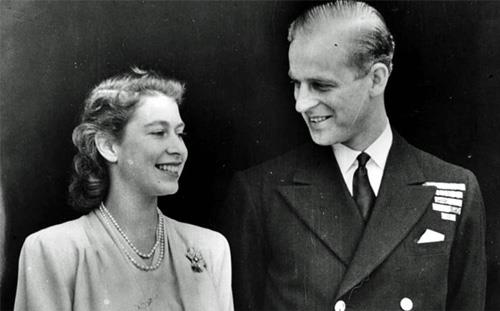
We may have discarded the British monarchy 237 years ago, but we continue to send valentines, sometimes without even any particular occasion.
National Geographic mails another one on Monday at 9 p.m. ET, with an hour-long documentary titled Being the Queen.
It's basically a love note to Queen Elizabeth II, not for any special reason except that we remain fascinated with the royalty of other countries and Elizabeth has been the royal face of Great Britain for as long as most of us have been alive.
Being the Queen sets itself a bit apart from other Elizabeth documentaries by uncovering historic film going back to 1952, when then-Princess Elizabeth and her husband, Prince Philip, were on a goodwill tour of Kenya. They got a phone call saying the king was dead and she was now the queen.
This and other vintage film clips are accompanied by voiceovers from contemporaries, mostly relatives of Elizabeth or Philip. That is to say, we aren't hearing from hard-edged historians. We're hearing from people who knew and liked the royal couple – which is fine, just a different perspective.
As in previous Elizabeth documentaries, this sends the unspoken message that we should see a human connection here – that Elizabeth may be queen and lead this totally strange life, but underneath it she's a person just like the rest of us. Previous portrayals have noted, for instance, her fondness for getting behind the wheel of a car and putting the pedal to the metal.
Still, Being the Queen notes that from the moment she learned her father had died, she knew her life would never be her own. She would be exalted at the price of having her every public move and utterance scrutinized.
Depending on the angle from which one views this, she either has never had to work a day in her life or she has had to work every day of her life.
In the context of that discussion, perhaps the most telling moment of Being the Queen lies in a factoid thrown out in passing when she arrives in Kenya on that 1952 goodwill trip.
She and Philip had been married about five years, but the "people" of Kenya wanted to give them a wedding present, which turned out to be their own large luxury lodge.
That would fall into the "oh, you shouldn't have" category for most people. It's also notable insofar as the people of Kenya, however fondly they may have regarded Elizabeth herself, were increasingly unhappy over being colonial subjects of her country. They finally won their independence in 1963, 11 years into Elizabeth's reign.
Being the Queen doesn't go there. Instead, it soon leaps forward to 1997, when Queen Elizabeth reached arguably the low point of her reign in the wake of Princess Diana's death.
Diana and the queen had never had the kind of relationship where they painted their toenails and told secrets together. After Diana's death, while most of Britain was falling to its knees weeping, the queen was publicly silent, giving the widespread impression she was indifferent, aloof and callous.
At the urging of Prime Minister Tony Blair, among others, Elizabeth eventually relented and provided a public showing of concern and admiration. Over the subsequent two decades, as she became the longest reigning monarch in British history, she gradually was forgiven and acquired a growing fondness of her own.
Being the Queen takes us from the roots of her ascension to that point, suggesting Elizabeth has navigated a largely successful run along a sometimes bumpy road.
While she shows few signs of slowing down at the age of 94, this documentary in a way feels like a pre-eulogy. Nat Geo is sending the valentine while she's still here to read it.